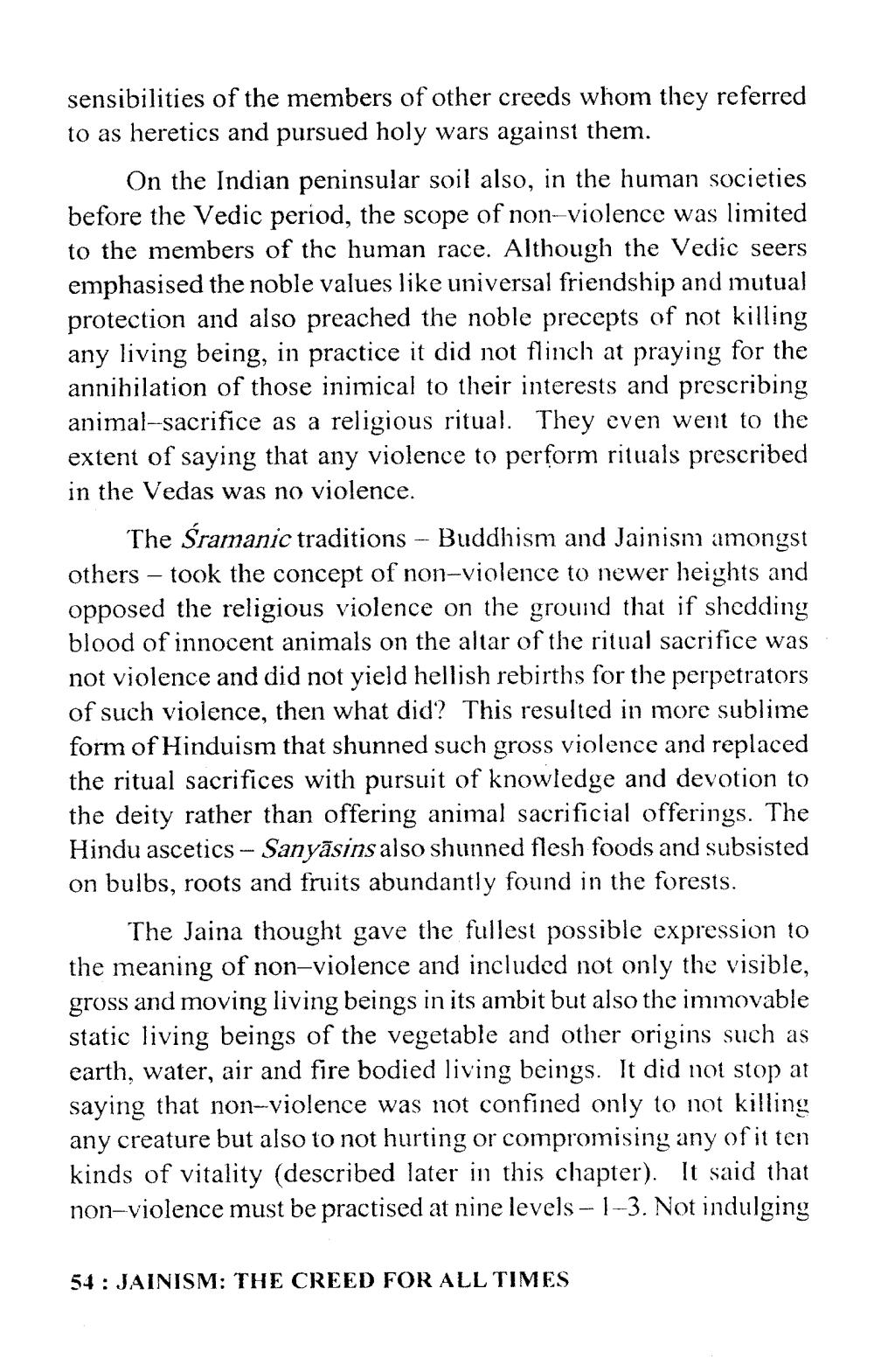________________
sensibilities of the members of other creeds whom they referred to as heretics and pursued holy wars against them.
On the Indian peninsular soil also, in the human societies before the Vedic period, the scope of non-violence was limited to the members of the human race. Although the Vedic seers emphasised the noble values like universal friendship and mutual protection and also preached the noble precepts of not killing any living being, in practice it did not flinch at praying for the annihilation of those inimical to their interests and prescribing animal-sacrifice as a religious ritual. They even went to the extent of saying that any violence to perform rituals prescribed in the Vedas was no violence.
The Šramanic traditions - Buddhism and Jainism amongst others – took the concept of non-violence to newer heights and opposed the religious violence on the ground that if shedding blood of innocent animals on the altar of the ritual sacrifice was not violence and did not yield hellish rebirths for the perpetrators of such violence, then what did? This resulted in more sublime form of Hinduism that shunned such gross violence and replaced the ritual sacrifices with pursuit of knowledge and devotion to the deity rather than offering animal sacrificial offerings. The Hindu ascetics - Sanyāsins also shunned flesh foods and subsisted on bulbs, roots and fruits abundantly found in the forests.
The Jaina thought gave the fullest possible expression to the meaning of non-violence and included not only the visible, gross and moving living beings in its ambit but also the immovable static living beings of the vegetable and other origins such as earth, water, air and fire bodied living beings. It did not stop at saying that non-violence was not confined only to not killing any creature but also to not hurting or compromising any of it ten kinds of vitality (described later in this chapter). It said that non-violence must be practised at nine levels - 1-3. Not indulging
54: JAINISM: THE CREED FOR ALL TIMES




